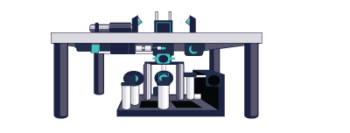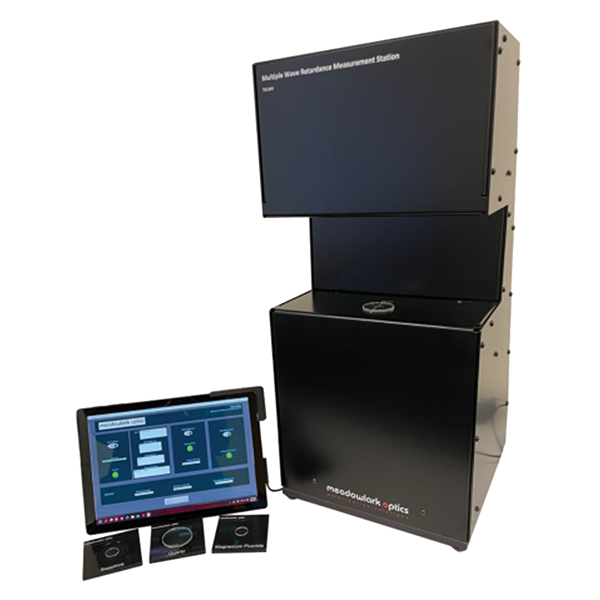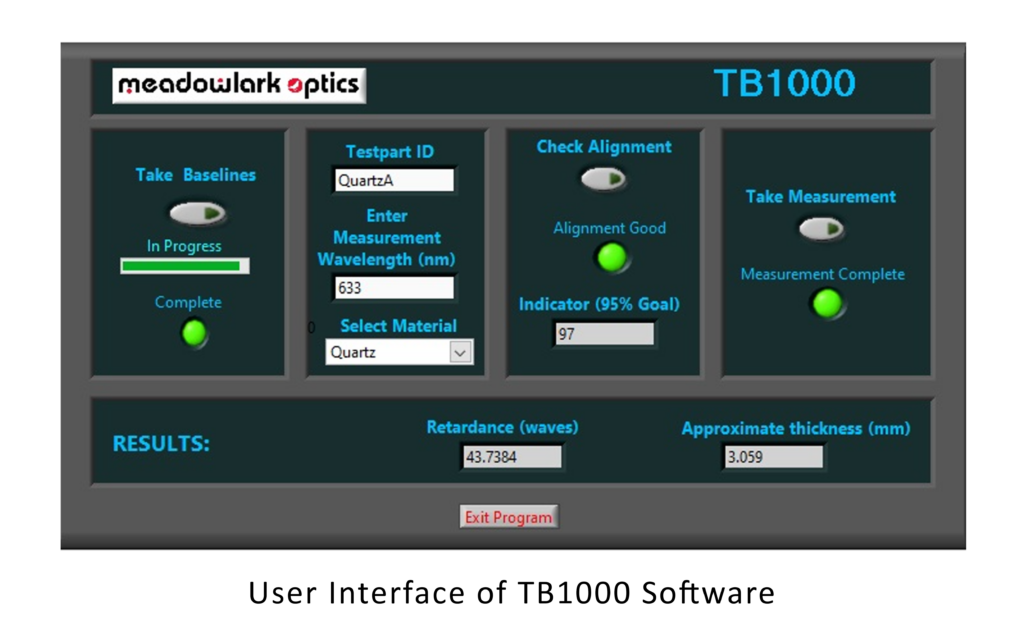Multiple Wave Retardance Measurement System
Meadowlark Optics’ Multiple Wave Retardance Measurement Station, Model TB1000, is the first commercial product for high precision measurements of waveplates. This fully-enclosed system measures the retardance of optical flat crystals of Sapphire, Magnesium Fluoride, and Quartz to λ/1000. The TB1000 is easily portable and can be easily moved from the lab to the production floor, bringing the precision of Meadowlark Optics Metrology Services to all of your labs.
Key features of the Multiple Wave Retardance Measurement System:
- Retardance measurements in under 10 seconds with one-click
- Highly Repeatable
- Fast Axis Alignment Check
- Automatic Dark and Bright Reference
- User-friendly Software Interface
- Reference Retarder Included
User-friendly Software interface
The TB1000 software is fully automated and provides user’s retardance measurements with a simple click. It takes <10 seconds to obtain accurate, repeatable results with the user-friendly software.
Accurate and repeatable measurements
Meadowlark Optics specialises in precision polymer retarders for the visible to near infrared region. Their Precision Retarders have the highest optical quality and tightest retardance tolerance of all polymer retarders. These true zero-order Precision Retarders consist of a birefringent polymer cemented between two precision polished, optically flat BK7 windows giving the system its’ high precision.
Meadowlark Optics has also developed precision ellipsometric techniques that can measure retardance to λ/1000. Their metrology for these measurements is the best in the industry. You can have absolute confidence that the calibration measurements supplied with your retarder are of the highest accuracy obtainable.
Optional items
Optional items can be added to the TB1000. The standard system has alignment marks to assist in placement of the waveplate on the measurement bay. This area can be customised per the user’s crystal dimensions with their drop-in alignment guide, which ensures that measurements are spatially accurate every time.


































